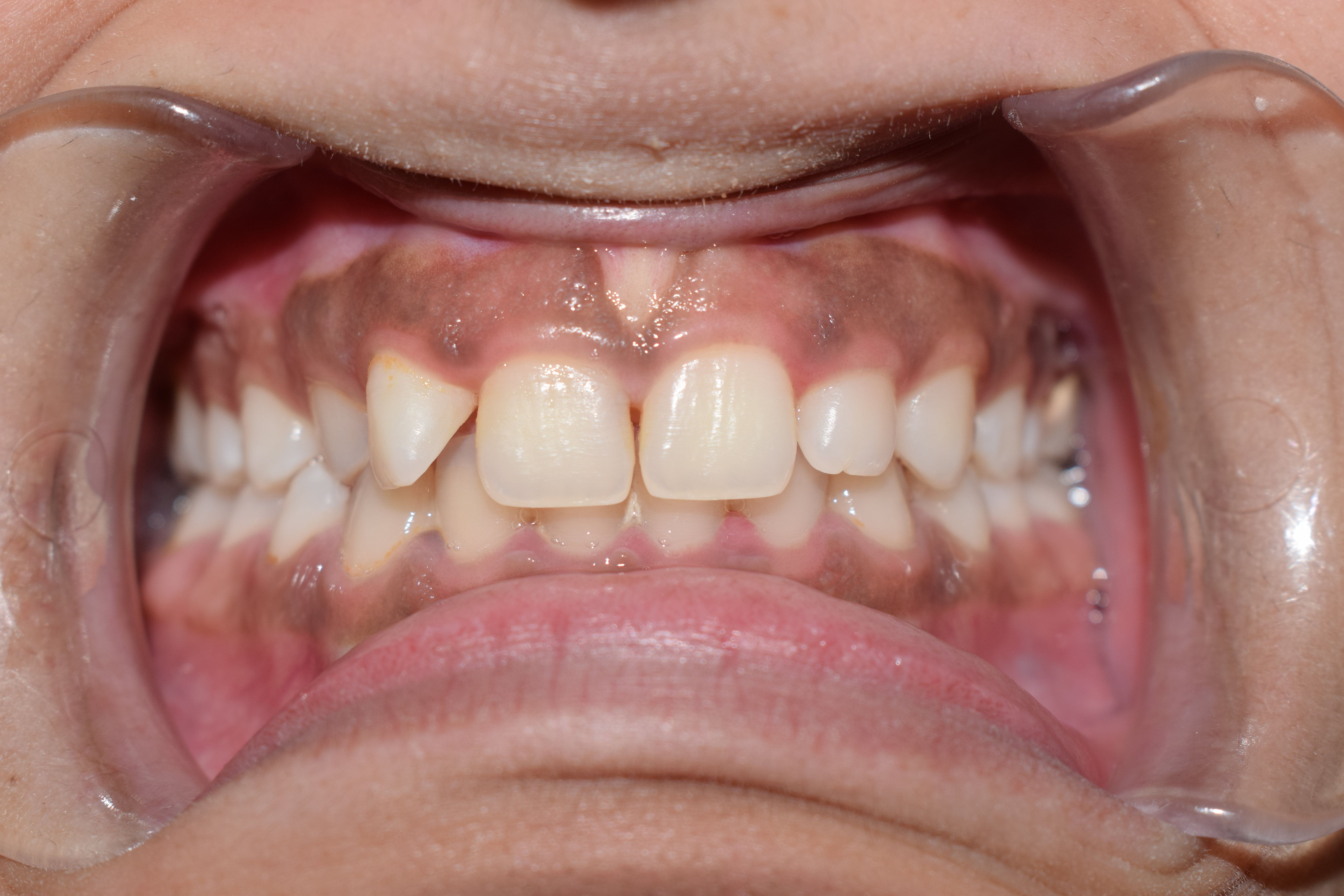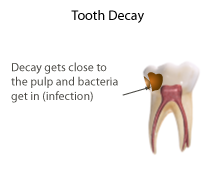|
Cervical Margins
The cervical margins of teeth are the surfaces where the crown and root meet, and is also referred to as the tooth's neck or cervical line. Anatomy The cervical margin, also known as the cervical line or neck of the tooth, represents the boundary between the enamel covering the crown and the cementum covering the root. The cementum typically overlaps the enamel, although in some cases, it may meet edge-to-edge. The cervical region includes the residual tooth structure between the gingival margin and the bone crest, encompassing the supragingival tooth area (STA) and gingival sulcus. Periodontal consideration Biological width The biological width is a crucial factor in maintaining periodontal health. It refers to the soft tissue dimensions coronal to the alveolar bone, consisting of junctional epithelium and supracrestal connective tissue attachment. However, by violating the biological width during restorative procedures can lead to periodontal breakdown, inflammat ... [...More Info...] [...Related Items...] OR: [Wikipedia] [Google] [Baidu] |
Cervical Margin
{{disambiguation ...
In anatomy, cervical is an adjective that has two meanings: # of or pertaining to any neck. # of or pertaining to the female cervix: i.e., the ''neck'' of the uterus. *Commonly used medical phrases involving the neck are **cervical collar **cervical disc (intervertebral disc) **cervical lymph nodes **cervical nerves **cervical vertebrae **cervical rib *Phrases that involve the uterine cervix include **cervical cancer **cervical smear or Pap smear *In Dental terminology **Cervical margins The cervical margins of teeth are the surfaces where the crown and root meet, and is also referred to as the tooth's neck or cervical line. Anatomy The cervical margin, also known as the cervical line or neck of the tooth, represents th ... [...More Info...] [...Related Items...] OR: [Wikipedia] [Google] [Baidu] |
Gums
The gums or gingiva (: gingivae) consist of the mucosal tissue that lies over the mandible and maxilla inside the mouth. Gum health and disease can have an effect on general health. Structure The gums are part of the soft tissue lining of the mouth. They surround the teeth and provide a seal around them. Unlike the soft tissue linings of the lips and cheeks, most of the gums are tightly bound to the underlying bone which helps resist the friction of food passing over them. Thus when healthy, it presents an effective barrier to the barrage of periodontal insults to deeper tissue. Healthy gums are usually coral pink in light skinned people, and may be naturally darker with melanin pigmentation. Changes in color, particularly increased redness, together with swelling and an increased tendency to bleed, suggest an inflammation that is possibly due to the accumulation of bacterial plaque. Overall, the clinical appearance of the tissue reflects the underlying histology, both in hea ... [...More Info...] [...Related Items...] OR: [Wikipedia] [Google] [Baidu] |
Cementoenamel Junction
In dental anatomy, the cementoenamel junction (CEJ) is the location where the enamel, which covers the anatomical crown of a tooth, and the cementum, which covers the anatomical root of a tooth, meet. Informally it is known as the neck of the tooth. The border created by these two dental tissues has much significance as it is usually the location where the gingiva (gums) attaches to a healthy tooth by fibers called the gingival fibers. Active recession of the gingiva reveals the cementoenamel junction in the mouth and is usually a sign of an unhealthy condition. The loss of attachment is considered a more reliable indicator of periodontal disease. The CEJ is the site of major tooth resorption. A significant proportion of tooth loss is caused by tooth resorption, which occurs in 5 to 10 percent of the population. The clinical location of CEJ which is a static landmark, serves as a crucial anatomical site for the measurement of probing pocket depth (PPD) and clinical attachment l ... [...More Info...] [...Related Items...] OR: [Wikipedia] [Google] [Baidu] |
Gingival Recession
Gingival recession, also known as gum recession and receding gums, is the exposure in the roots of the teeth caused by a loss of gum tissue or retraction of the gingival margin from the crown of the teeth.Gingival Recession - Causes and treatment JADA, Vol 138. http://jada.ada.org. Oct 2007. American Dental Association Gum recession is a common problem in adults over the age of 40, but it may also occur starting in adolescence, or around the age of 10. It may exist with or without concomitant decrease in (recession of |
Periodontal Disease
Periodontal disease, also known as gum disease, is a set of inflammatory conditions affecting the tissues surrounding the teeth. In its early stage, called gingivitis, the gums become swollen and red and may bleed. It is considered the main cause of tooth loss for adults worldwide. In its more serious form, called periodontitis, the gums can pull away from the tooth, bone can be lost, and the teeth may loosen or fall out. Halitosis (bad breath) may also occur. Periodontal disease typically arises from the development of plaque biofilm, which harbors harmful bacteria such as ''Porphyromonas gingivalis'' and ''Treponema denticola''. These bacteria infect the gum tissue surrounding the teeth, leading to inflammation and, if left untreated, progressive damage to the teeth and gum tissue. Recent meta-analysis have shown that the composition of the oral microbiota and its response to periodontal disease differ between men and women. These differences are particularly notable in t ... [...More Info...] [...Related Items...] OR: [Wikipedia] [Google] [Baidu] |
Tooth Decay
Tooth decay, also known as caries,The word 'caries' is a mass noun, and is not a plural of 'carie'.'' is the breakdown of teeth due to acids produced by bacteria. The resulting cavities may be a number of different colors, from yellow to black. Symptoms may include pain and difficulty eating. Complications may include periodontal disease, inflammation of the tissue around the tooth, tooth loss and infection or dental abscess, abscess formation. Tooth regeneration is an ongoing Stem-cell therapy, stem cell–based field of study that aims to find methods to reverse the effects of decay; current methods are based on easing symptoms. The cause of cavities is acid from bacteria dissolving the hard tissues of the teeth (Tooth enamel, enamel, dentin and cementum). The acid is produced by the bacteria when they break down food debris or sugar on the tooth surface. Simple sugars in food are these bacteria's primary energy source and thus a diet high in simple sugar is a risk factor. I ... [...More Info...] [...Related Items...] OR: [Wikipedia] [Google] [Baidu] |
Non-carious Cervical Lesions
Non-carious cervical lesions (NCCLs) are a group of lesions that are characterised by a loss of hard dental tissue at the cementoenamel junction, cementoenamel junction (CEJ) region at the neck of the tooth, without the action of microorganisms or Inflammation, inflammatory processes. These lesions vary in shape from regular depressions that look like a dome or a cup, to deep wedge-shaped defects with the apex pointing inwards. NCCLs can occur either above or below the level of the Gums, gum, at any of the surfaces of the teeth. Aetiology NCCL is a complex multifactorial condition and it is believed that multiple factors contribute to the formation of such lesions. Traditionally, the believed Etiology, aetiological causes for NCCL have been Acid erosion, erosion and Abrasion (dental), abrasion. However, in the past few decades, abfraction has been implicated as a possible contributing factor of NCCLs as well. Bartlett and Shah propose that NCCLs arise from a combination of all ... [...More Info...] [...Related Items...] OR: [Wikipedia] [Google] [Baidu] |
Dental Abrasion Klinovidny De207
{{Disambig ...
Dental may refer to: * Dental consonant, in phonetics * Dental Records, an independent UK record label * Dentistry, oral medicine * Teeth See also * * Dental care (other) * Dentist (other) * Tooth (other) A tooth (: teeth) is a small, calcified, whitish structure found in the jaws (or mouths) of many vertebrates. Tooth or Teeth may also refer to: Music *Teeth (Filipino band), a Filipino rock band *Teeth (electronic band), UK electronic pop punk b ... [...More Info...] [...Related Items...] OR: [Wikipedia] [Google] [Baidu] |
Glass Ionomer Cement
A glass ionomer cement (GIC) is a dental restorative material used in dentistry as a filling material and luting cement, including for orthodontic bracket attachment. Glass-ionomer cements are based on the reaction of silicate glass-powder (calciumaluminofluorosilicate glass) and polyacrylic acid, an ionomer. Occasionally water is used instead of an acid, altering the properties of the material and its uses. This reaction produces a powdered cement of glass particles surrounded by matrix of fluoride elements and is known chemically as glass polyalkenoate. There are other forms of similar reactions which can take place, for example, when using an aqueous solution of acrylic/ itaconic copolymer with tartaric acid, this results in a glass-ionomer in liquid form. An aqueous solution of maleic acid polymer or maleic/acrylic copolymer with tartaric acid can also be used to form a glass-ionomer in liquid form. Tartaric acid plays a significant part in controlling the setting charac ... [...More Info...] [...Related Items...] OR: [Wikipedia] [Google] [Baidu] |
Crown Lengthening
Crown lengthening is a surgical procedure performed by a dentist, or more frequently a periodontist, where more tooth is exposed by removing some of the gingival margin (gum) and supporting bone. Crown lengthening can also be achieved orthodontically (using braces) by extruding the tooth. Crown lengthening is done for functional and/or esthetic reasons. Functionally, crown lengthening is used to: 1) increase retention and resistance when placing a fabricated dental crown, 2) provide access to subgingival caries, 3) access accidental tooth perforations, and 4) access external root resorption. Esthetically, crown lengthening is used to alter gum and tooth proportions, such as in a gummy smile. There are a number of procedures used to achieve an increase in crown length. Biomechanical considerations Crown length The remaining crown of the natural tooth needs to be sufficiently long to have adequate retention and resistance to withstand occlusal (biting) forces. Withou ... [...More Info...] [...Related Items...] OR: [Wikipedia] [Google] [Baidu] |
Root Canal Treatment
Root canal treatment (also known as endodontic therapy, endodontic treatment, or root canal therapy) is a treatment sequence for the infected pulp of a tooth that is intended to result in the elimination of infection and the protection of the decontaminated tooth from future microbial invasion. It is generally done when the cavity is too big for a normal filling. Root canals, and their associated pulp chamber, are the physical hollows within a tooth that are naturally inhabited by nerve tissue, blood vessels and other cellular entities. Endodontic therapy involves the removal of these structures, disinfection and the subsequent shaping, cleaning, and decontamination of the hollows with small files and irrigating solutions, and the obturation (filling) of the decontaminated canals. Filling of the cleaned and decontaminated canals is done with an inert filling such as gutta-percha and typically a zinc oxide eugenol-based cement. Epoxy resin is employed to bind gutta-percha i ... [...More Info...] [...Related Items...] OR: [Wikipedia] [Google] [Baidu] |
Pulpotomy
Pulpotomy is a minimally invasive procedure performed in children on a primary tooth with extensive Tooth decay, caries but without evidence of root pathology. The Minimally invasive procedure, minimally invasive, Endodontics, endodontic techniques of vital pulp therapy (VPT) are based on improved understanding of the capacity of Pulp (tooth), pulp tissues to heal and regenerate plus the availability of advanced endodontic materials. During caries removal, this results in a carious or mechanical pulp exposure from the cavity. During pulpotomy, the inflamed/diseased pulp tissue is removed from the coronal pulp chamber of the tooth, leaving healthy pulp tissue which is dressed with a long-term clinically successful medicament that maintains the survival of the pulp and promotes repair. There are various types of medicament placed above the vital pulp such as Buckley's Solution of formocresol, ferric sulfate, calcium hydroxide or mineral trioxide aggregate (MTA). MTA is a more recent ... [...More Info...] [...Related Items...] OR: [Wikipedia] [Google] [Baidu] |








